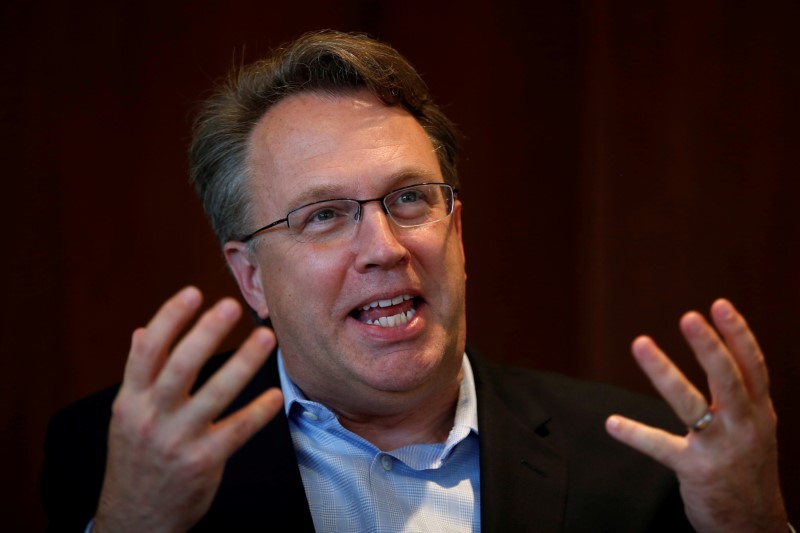 © Reuters. FILE PHOTO: San Francisco Federal Reserve President John Williams speaks to Reuters in San Francisco, California
© Reuters. FILE PHOTO: San Francisco Federal Reserve President John Williams speaks to Reuters in San Francisco, CaliforniaBy Ann Saphir
SANTA ROSA, Calif. (Reuters) – The Federal Reserve needs to keep raising U.S. interest rates gradually to keep the economy, already growing faster than its trend rate, from getting too hot, an influential U.S. central banker said on Friday.
In a speech that made no mention of rising trade tensions that have sent stocks into a dive, San Francisco Fed President John Williams said he expected growth to stay strong and inflation to finally hit and even exceed the Fed’s 2-percent target.
“I am confident that we can carry on the process of gradually moving interest rates up over the next two years while seeing solid growth and historically low rates of unemployment,” he said in remarks prepared for delivery to the World Affairs Council of Sonoma County.
The Fed last month raised the target range for its policy rate to 1.5 percent to 1.75 percent, and signaled it would likely raise rates two or three more times this year and further next year, to about 3.5 percent by 2020.
“In my view, this is the right direction for monetary policy,” said Williams, who was picked earlier this week to be the next chief of the New York Fed. This makes him one of Fed Chair Jerome Powell’s chief advisers and the central bank’s point person on Wall Street and markets.
Both Washington and Beijing are threatening to hike tariffs on tens of billions of dollars in bilateral trade, moves that have some analysts warning of a trade war that could put a dent in economic growth. U.S. stocks fell on the tariffs news.
In his prepared remarks, Williams did not flag the tariffs or any other specific risk to the economy, saying only that if growth does turn paltry, or by contrast inflationary pressures become apparent, he would adjust his rate-hike views accordingly.
He forecast economic growth this year and next to be about 2.5 percent, faster than the underlying trend growth of 1.75 percent and enough to push the unemployment rate, now at 4.1 percent, down to 3.5 percent next year. Inflation, he predicted, will likely run above the Fed’s 2-percent target for a few years.
“Growth above trend doesn’t necessarily pose a particular risk at this time,” Williams told the group of about 150. But the Fed needs to continue to raise rates, he said. “That will keep things on an even footing and reduce the risk of us getting to a point where the economy could overheat, and create problems that could end badly.”
Fusion Media or anyone involved with Fusion Media will not accept any liability for loss or damage as a result of reliance on the information including data, quotes, charts and buy/sell signals contained within this website. Please be fully informed regarding the risks and costs associated with trading the financial markets, it is one of the riskiest investment forms possible.
Source: Investing.com


























